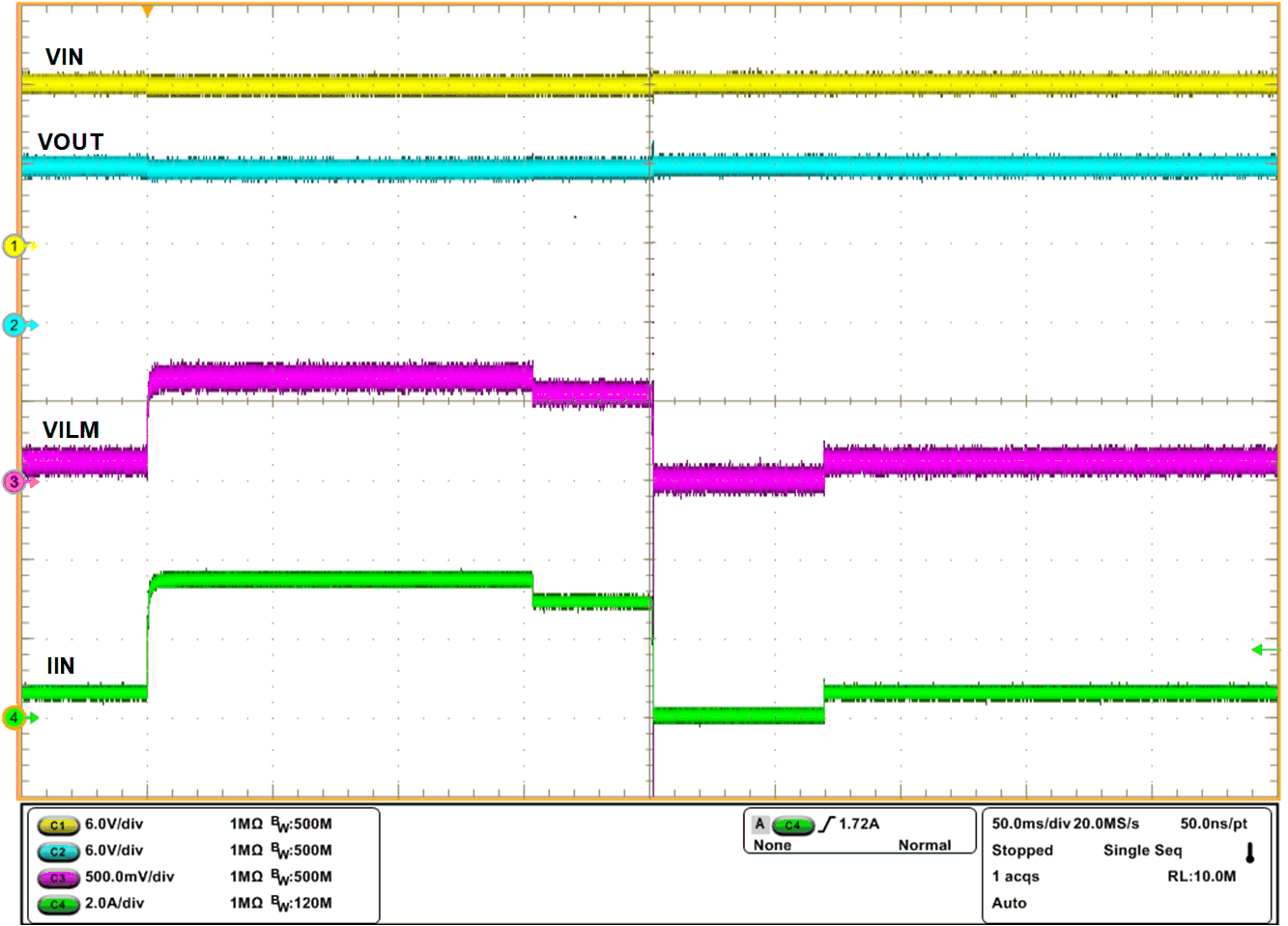JAJSLP7B May 2021 – April 2022 TPS25946
PRODUCTION DATA
- 1 特長
- 2 アプリケーション
- 3 概要
- 4 Revision History
- 5 Device Comparison Table
- 6 Pin Configuration and Functions
- 7 Specifications
-
8 Detailed Description
- 8.1 Overview
- 8.2 Functional Block Diagram
- 8.3
Feature Description
- 8.3.1 Undervoltage Lockout (UVLO and UVP)
- 8.3.2 Overvoltage Lockout (OVLO)
- 8.3.3 Inrush Current, Overcurrent, and Short-Circuit Protection
- 8.3.4 Analog Load Current Monitor
- 8.3.5 Reverse Current Protection
- 8.3.6 Overtemperature Protection (OTP)
- 8.3.7 Fault Response and Indication (FLT)
- 8.3.8 Power Good Indication (PG)
- 8.3.9 Input Supply Good Indication (SPLYGD)
- 8.4 Device Functional Modes
-
9 Application and Implementation
- 9.1 Application Information
- 9.2
Typical Application
- 9.2.1 Design Requirements
- 9.2.2
Detailed Design Procedure
- 9.2.2.1 Device Selection
- 9.2.2.2 Setting Overvoltage Threshold
- 9.2.2.3 Setting Output Voltage Rise Time (tR)
- 9.2.2.4 Setting Power Good Assertion Threshold
- 9.2.2.5 Setting Overcurrent Threshold (ILIM)
- 9.2.2.6 Setting Overcurrent Blanking Interval (tITIMER)
- 9.2.2.7 Selecting External Bias Resistor (R5)
- 9.2.2.8 Selecting External Diode (D1)
- 9.2.3 Application Curve
- 10Power Supply Recommendations
- 11Layout
- 12Device and Documentation Support
- 13Mechanical, Packaging, and Orderable Information
8.3.4 Analog Load Current Monitor
The TPS25946xx allows the system to accurately monitor the load current by providing an analog current sense output on the ILM pin which is proportional to the current through the FET from IN to OUT. The user can sense the voltage (VILM) across the RILM to get a measure of the output load current.
The waveform below shows the ILM signal response to a load step at the output.

| VIN = 12 V, COUT = 22 μF, RILM = 1150 Ω, IOUT varied dynamically between 0 A and 3.5 A |
-
The ILM pin is sensitive to capacitive loading. Careful design and layout is needed to ensure the parasitic capacitive loading on the ILM pin is < 50 pF for stable operation.
-
The ILM pin can only report the current flowing from IN to OUT and not from OUT to IN.